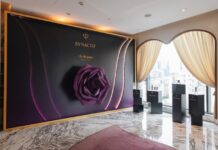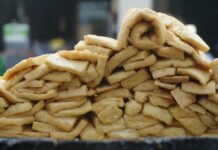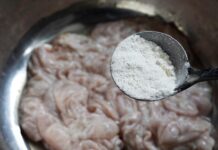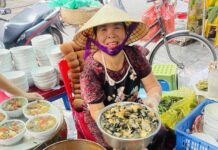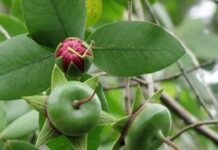Hàng Buồm Street Ancient House
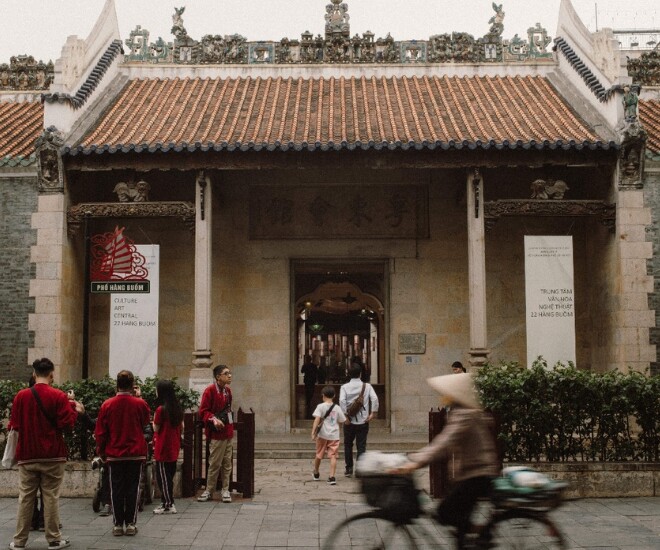
The 22 Hang Buom Art and Culture Center is now a venue for impressive art exhibitions, attracting many visitors to come and learn about the beautiful culture.
About 400 years ago, the Cantonese community (from China) settled and traded in the area of Hang Ngang, Hang Buom, Hang Bo, and Lan Ong (formerly belonging to Ha Khau ward) and built the Guangdong Association as a common community center.
Not only a place of worship, the association also played an important role in the economic life, serving as a meeting place for traders of Chinese origin. Over time and after many changes, the building was renovated from the end of 2018 and completed at the end of 2021. Today, with a new face called the 22 Hang Buom Art and Culture Center, it has become an artistic destination, preserving and spreading cultural values in the heart of Hanoi’s Old Quarter.
Currently, the Hang Buom ancient house is open from 8:00 AM to 12:00 PM and from 1:30 PM to 5:30 PM. The entrance fee is 20,000 VND/person.

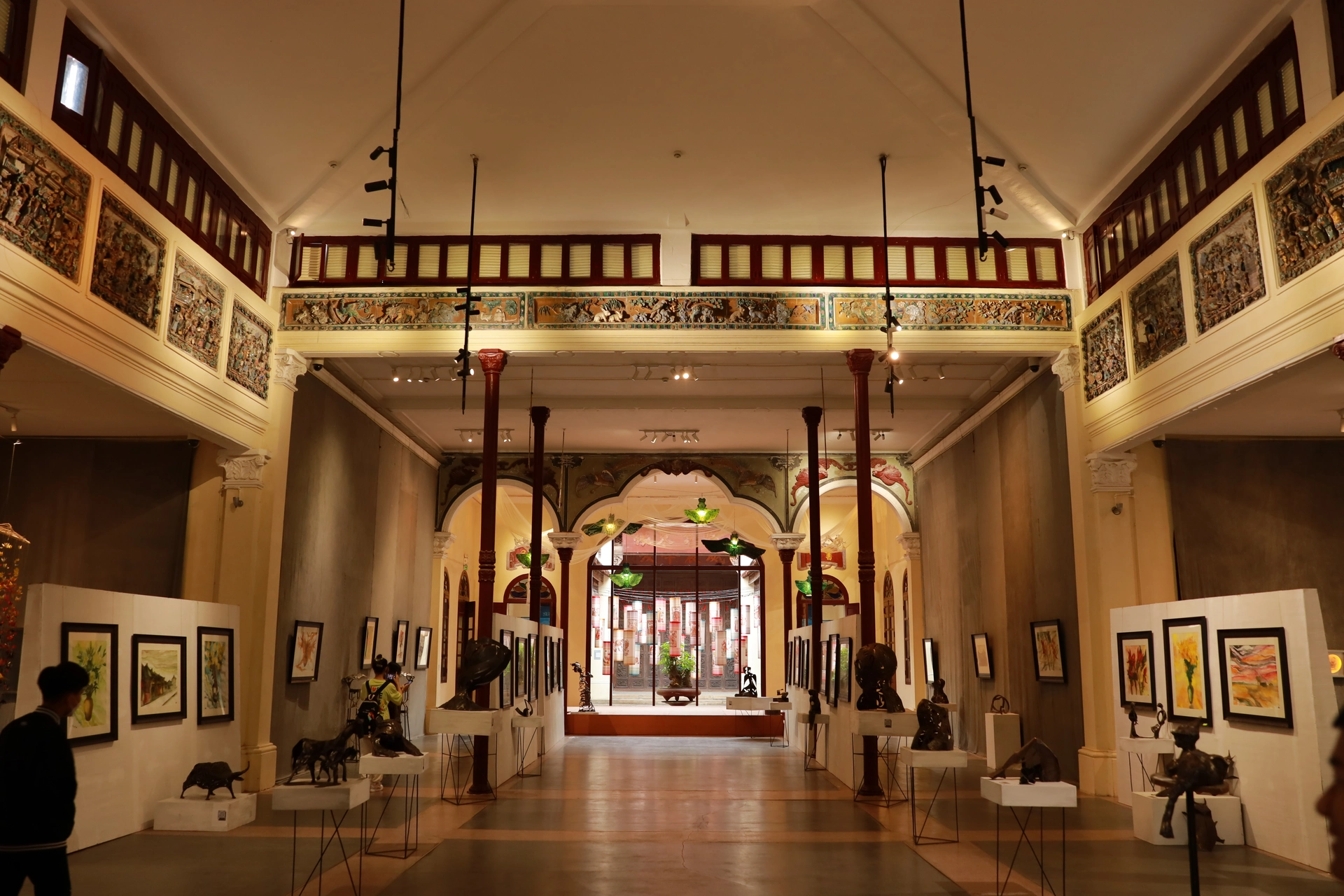
Today, any corner of the 22 Hang Buom Art and Culture Center is worth checking in, promising to bring impressive photo shoots.
Ancient House on Ma May Street
The ancient house at 87 Ma May is one of 14 ancient houses in Hanoi that are being preserved as tourist attractions and exhibition centers. It was built in the late 19th century, with a total area of 157.6 square meters, 28 meters long, 5 meters wide at the front, and 6 meters wide at the back.
The house at 87 Ma May Street is characteristic of ancient houses in Hanoi. It was built in the late 19th century by a Vietnamese rice-trading family.

The house is a typical example of traditional Vietnamese architecture, built according to the ancient concept that the house should have a “blossoming” shape to bring luck and prosperity to the owner.
Initially, the building served both as a residence and a place of business. Over time, it changed hands several times. In 1945, it was bought by a merchant specializing in Chinese medicine, and from 1954 to 1999, it became the home of five different families.
Despite its modest and simple exterior, the interior is quite different, offering a comfortable, spacious, and cool atmosphere. The house is designed with a three-layer structure, separated by two small yards, allowing natural light to come in and creating a green space with potted plants, harmonizing the relationship between humans and nature.
Currently, the Ma May ancient house is open every day from 8:00 AM to 5:00 PM. The entrance fee is 10,000 VND/person.
Ancient House on Hang Be Street
Located at 44 Hang Be Street, Hoan Kiem District, this villa was designed in a French colonial style with an area of 800 square meters, nestled deep in the alley. Built in 1926, the building stands out with its unique architecture, preserving the memories of a wealthy Hanoi family from the early 20th century. The first owners were Truong Trong Vong and Nguyen Thi Suu, famous wealthy merchants in Hanoi’s Old Quarter. After their passing, the villa was inherited by their second daughter, Truong Thi Mo, and now belongs to Le Thanh Thuy.
Currently, the villa still maintains a spacious space, meeting the living needs of the whole family. Inside are bedrooms for the owners and guests, a cozy dining room, and modern bathrooms. A notable feature of the house is the four monolithic stone pillars intricately carved with “Peach – Chrysanthemum – Bamboo – Plum” patterns, enhancing the classical beauty and symbolizing peace and prosperity.
Not just an impressive architectural work, the villa at 44 Hang Be also preserves many historical stories. Through the ups and downs of history, the house has retained its old soul, becoming an integral part of the cultural landscape of Hanoi’s Old Quarter. Today, the villa attracts those interested in architecture and history, serving as a living testament to Hanoi’s enduring beauty across generations.

Through the vicissitudes of history, while some parts have shown signs of deterioration, the overall structure has largely retained its French colonial style.

Most of the furniture in the Hang Be villa was imported from Europe or Hong Kong and has been preserved to this day.
Ancient Villa on Tran Hung Dao Street
Located at 49 Tran Hung Dao Street, this is the first French villa in Hanoi to be systematically restored, expected to become a cultural exchange center for the old town area.
With its distinctive design in the style of Indochinese architecture, the villa exudes both classical and luxurious charm, reflecting the historical imprint and cultural blend between East and West.
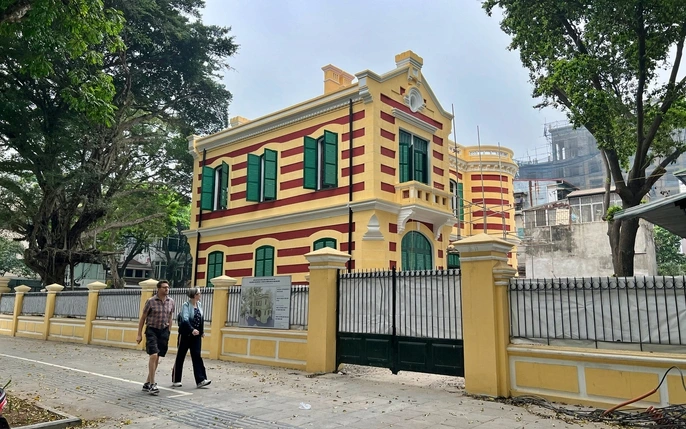
The ancient villa at 49 Tran Hung Dao Street (Hoan Kiem District, Hanoi) has basically completed the major items after a year of restoration, with a cost of up to 14 billion VND.
The villa was reconstructed in the style of French colonial architecture, with decorative details on the walls, pillars, and balconies bearing the imprint of European art, creating a harmonious and sophisticated ensemble. The interior space is arranged reasonably, making the most of natural light to create a spacious and natural atmosphere.
Today, after a renovation costing tens of billions of dong, the villa has become not only a valuable architectural heritage but also an attractive destination for those interested in history, art, and culture in the capital.





